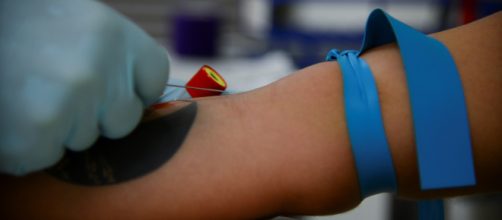The Centers for Disease Control and Prevention (CDC) released an online report on Nov. 28 stating that the US is making progress in its fight against the dreaded disease HIV. The report compared data from 2011 and 2015 to analyze the progress. Even though the gains have been uneven, and a number of challenges still remain, the progress is nonetheless a positive step.
Reducing time between infection and diagnosis
According to the report titled “Vital Signs: Human Immunodeficiency Virus Testing and Diagnosis Delays — United States,” there has been a shortening of the delay time between people getting infected with the HIV and getting diagnosed.
US health officials believe that increased testing of the deadly virus is the main cause for the time shrink.
When compared with the 2011 data, in 2015, around 50 percent of the 39,720 people diagnosed with HIV were to be infected for at least three years, which is a seven-month improvement. However, the report also mentions that in 2015, 25 percent of those infected with HIV, were found to be infected for seven or more years before they had their diagnosis.
Many go undiagnosed for years
Despite the challenges and the uneven gains, CDC Director Dr. Brenda Fitzgerald is hopeful and happy with the figures. There has definitely been an improvement. For better HIV prevention, the time between infection and diagnosis must be shortened.
Today, there are too many people with HIV who go completely undiagnosed for a very long time.
According to Reuters, around 40 percent of new infections are caused by people who are not even aware they are infected. Sadly, around 15 percent of those with HIV in 2015 were clueless about their condition. Half of those unaware of the infection lived in the South.
Delay in HIV Diagnosis is a worrying cause, and they vary radically by gender, race or ethnicity.
Missed opportunities
According to Dr. Jonathan Mermin, director of CDC’s National Center for HIV/AIDS, Viral Hepatitis, STD, and TB Prevention, certain groups, especially ethnic and racial minorities and heterosexual men, have the worst diagnosis rate.
They live with the infection way longer than other groups before getting diagnosed.
It has been found that the time between HIV Infection and diagnosis for heterosexual men is a median of five years, which is twice as long when compared to heterosexual women. For bisexual and gay men, this median was found to be three years. There have also been a number of missed opportunities.
The high-risk individuals
For example, a number of high-risk individuals reported that they did not get tested in the prior year. Two-thirds of those who were not tested had visited a healthcare specialist. Among the high-risk individuals, 59 percent were heterosexuals, 42 percent were people who inject drugs, and 29 percent were bisexual and gay men.
The report also stated that those people who have been diagnosed with HIV and are on medication are considerably less likely to spread the disease.


